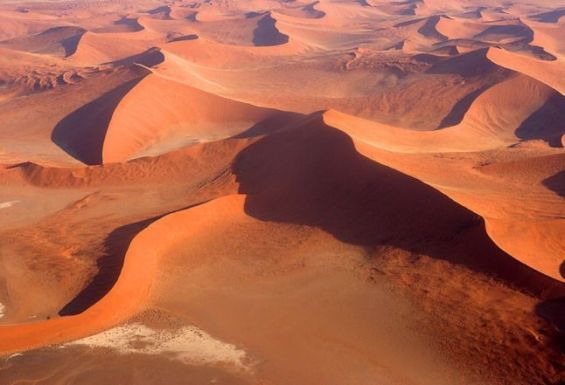From afar, they look like sand pyramids, with pointy tops and radiating arms. This is why they are commonly known as star dunes. They are the largest and most complex type of desert dune on our planet.
Star dunes are also unique because they are the tallest of their kind, with similar formations even found outside our solar system, on Mars and Saturn's moon, Titan. Star dunes are widespread in modern deserts, specifically in south eastern Morocco near the Algerian border. There, a star dune called Lalla Lallia showcases the uniqueness of these intricate sand structures.
Scientists from the Earth departments of University College London and Aberystwyth University in Wales traveled to Erg Chebbi, a large sea of dunes near M'hamid El Ghizlane, to study this Moroccan gem Lalla Lallia star dune. In a paper published Monday by the peer-reviewed science journal Nature, the scientists reveal details about Lalla Lallia.
Lalla Lallia, the highest sacred point
The star dune, which translates to «highest sacred point», has pointy arms and reaches 100 meters tall and 700 meters wide. The study reveals that Lalla Lallia owes its star-like shape to winds blowing from two main directions: the strong «Sirocco» wind from southwest to northeast and the weaker «Chergui» wind from northeast to southwest. The study also shows there's a less frequent easterly wind.
Adding to the uniqueness of these dunes is their movement. Scientists studied how the sand dune moved over time. They found the sand mostly shifts sideways, up to 17 meters at most, but usually less than 3 meters in 16 months.
The direction the sand blows depends on which part of the dune arm it's on. The top of the dune seems to change more than the lower parts. This is likely because the wind blows stronger the higher you go on the dune, similar to other star dunes around the world.
But how long did it take for this giant dune to be formed? To determine how old different parts of the sand dune are, scientists used a technique involving light, known as optical dating. The results showed that the bottom of the dune is its oldest part, with sand grains that are between 13,000 and 9,500 years old. As they went higher, scientists realized that the sand got younger, with the very top sand dating back to only 150 years ago. The sandy «arms», which give the dune its star shape, are also very young, with most sand being less than 70 years old.
Speaking about the oldest part of the star dune, Professor Geoff Duller of the Department of Geography and Earth Sciences at Aberystwyth University, and one of the authors of the study, told the Guardian that «the dune was stabilized by vegetation». He explained, «It seems to have stayed like that for about 8,000 years. Then the climate started to change again and this star dune started to form».





 chargement...
chargement...













